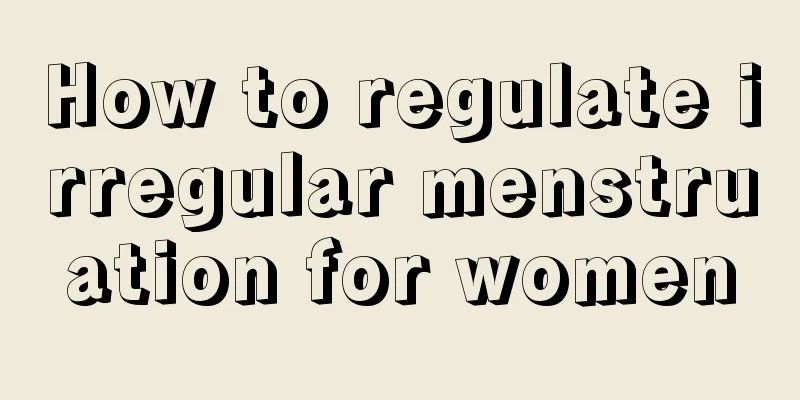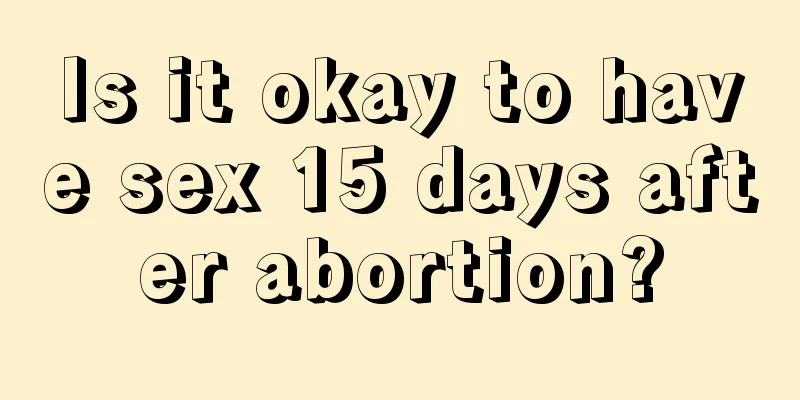What are the symptoms of postpartum intestinal obstruction?

|
After giving birth, the space in a woman's abdomen will suddenly increase due to the delivery of the fetus. If she stands for a long time or eats too much food at one time, it is likely to cause intestinal sagging or even intestinal obstruction. Severe pain usually occurs after intestinal obstruction. Let us learn about some of the main clinical manifestations of intestinal obstruction in postpartum women. Intestinal obstruction is mainly caused by factors such as obstruction of intestinal contents passage, intestinal peristalsis disorder, intestinal blood circulation disorder, etc. It mainly occurs in the small intestine and colon. The main symptoms of intestinal obstruction are abdominal pain, vomiting, abdominal distension, and cessation of flatulence and defecation from the anus. 1. Abdominal pain. Most patients with intestinal obstruction have abdominal pain. In patients with acute complete mechanical small bowel obstruction, abdominal pain manifests as paroxysmal colic. It is caused by strong peristalsis of the intestine above the obstruction site. Mostly located in the middle abdomen. Often occurs suddenly. Gradually intensifies to a peak, lasts for a few minutes, and then eases. The interval period can be completely painless, but it can recur after a period of time. The degree of colic and the length of the intervals vary depending on the height of the obstruction and the severity of the disease. Generally speaking, vomiting can relieve pressure when the duodenum and upper jejunum are obstructed, and the patient's colic is milder. However, low ileal obstruction can inhibit intestinal peristalsis due to intestinal bloating, so the colic is also mild. The colic is more severe only in acute jejunal obstruction. It usually occurs every 2 to 5 minutes. The abdominal pain of incomplete intestinal obstruction is mild and can be relieved after a burst of bowel sounds or flatulence. The same is true for chronic intestinal obstruction, and the interval period is also long. In acute mechanical colon obstruction, abdominal pain is mostly in the lower abdomen and is generally milder than small intestinal obstruction. If the ileocecal valve functions normally during colon obstruction, the contents of the colon cannot flow back into the small intestine, and the intestinal cavity gradually expands and the pressure increases. Therefore, in addition to paroxysmal colic, there may be persistent dull pain. In this case, attention should be paid to the possibility of closed loop intestinal obstruction. Persistent dull pain between attacks is also an early manifestation of strangulated intestinal obstruction. If ischemia and necrosis have occurred in the intestinal wall, it will present as persistent severe abdominal pain. As for paralytic ileus, since the intestinal muscles have lost the ability to move, there will be no intestinal colic attacks, but persistent abdominal distension and pain may be caused by the high degree of intestinal distension. (ii) Vomiting. Almost all patients with intestinal obstruction experience vomiting. In the early stages, it is reflex vomiting, and the vomitus is mostly gastric contents. In the later stage, it is reflux vomiting, which varies depending on the location of the obstruction. The higher the location, the more frequent and severe the vomiting. In case of low small intestinal obstruction, vomiting is milder and less frequent. In case of colon obstruction, there may be no vomiting in the early stage because the ileocecal valve can prevent reflux. However, in the later stage, when the ileocecal valve does not close completely due to overfilling of the intestinal cavity, there will be more severe vomiting and the vomit may contain fecal juice. Therefore, female friends must pay attention to proper rest after giving birth. They can do some light activities at this time, but it is best to stay in bed at ordinary times, especially not to do excessive exercise. In terms of diet, it is best to eat small meals frequently to replenish the body with adequate nutrients. |
<<: How long is the best time to have an abortion?
>>: At what age does menopause begin?
Recommend
Pregnancy test results and menstruation
For women who are preparing for pregnancy, pregna...
Four months pregnant, the left side of the belly is bigger than the right side
We all know that the correct fetal position is di...
Apple's financial report: Apple's total revenue in Q3 of fiscal year 2024 was US$85.8 billion, a year-on-year increase of 5%
Apple recently held a third-quarter earnings conf...
How serious is the right uterine adnexal cyst?
Right uterine adnexal cyst is a common disease am...
What are the tips for breast enhancement?
Everyone loves beauty, and people are always diss...
Is Wangbuliuxing breast enhancement method effective?
Every woman pays special attention to her "c...
What should you prepare before pregnancy?
Today's couples all hope that their babies ca...
The fifth day of menstruation, the leucorrhea is bloody
During menstruation, girls' leucorrhea will a...
Can you eat rabbit meat during menstruation?
Rabbit meat is a food that can cause allergies. E...
How long does it take to recover after childbirth?
After giving birth, many women gain weight and lo...
What happens if you eat ice cream during menstruation?
Ice cream is a food that is loved by many people....
What happens when a pregnant woman comes into contact with a dog?
Many people like to keep some pets. Puppies are l...
Morning is the best time to do this
We spend a lot of time in our lives sleeping. Sle...
How to use a female condom
Condoms are a widely used contraceptive product w...
Threatened abortion spontaneously aborted within a few days
Threatened miscarriage can usually be spontaneous...









